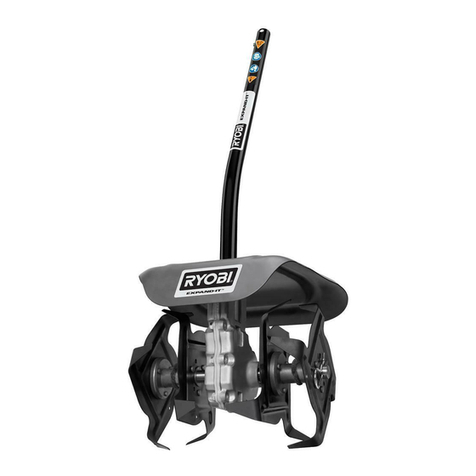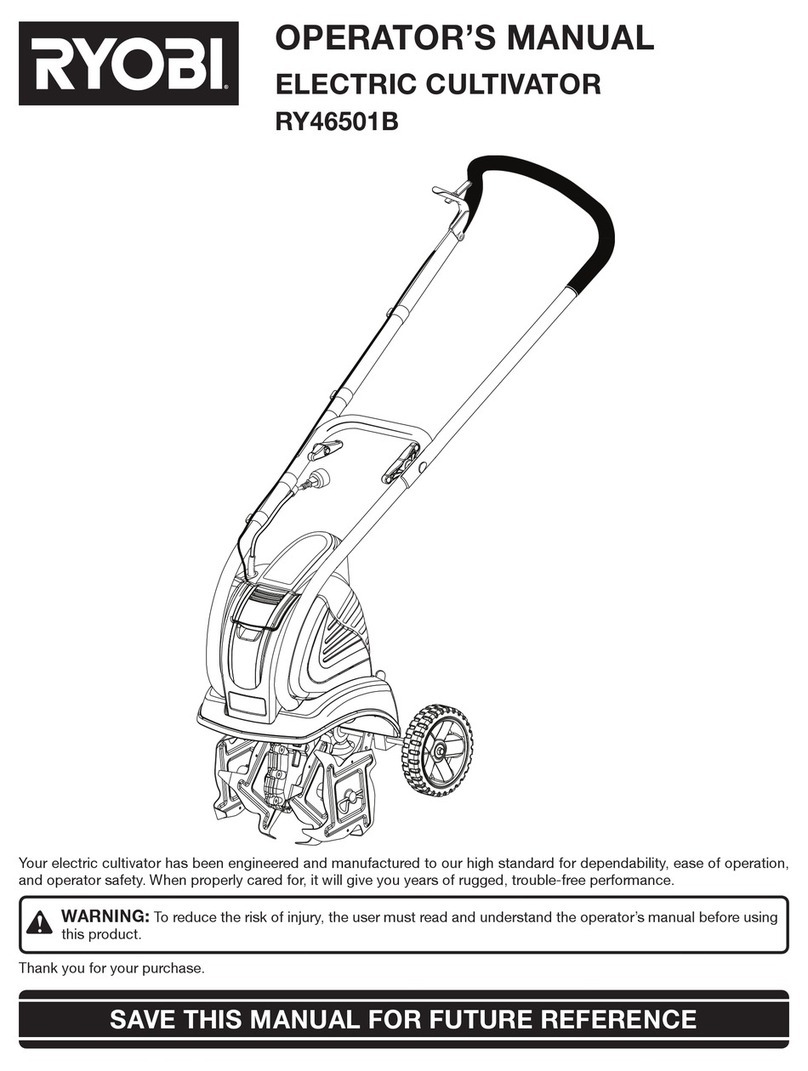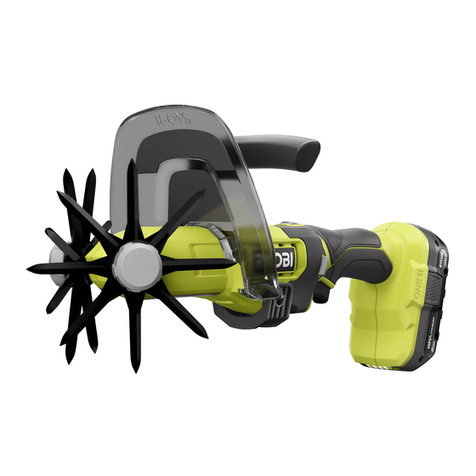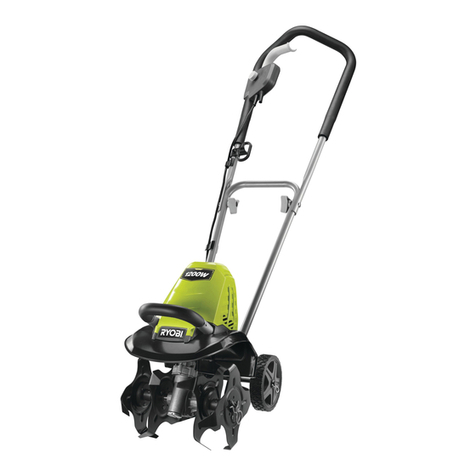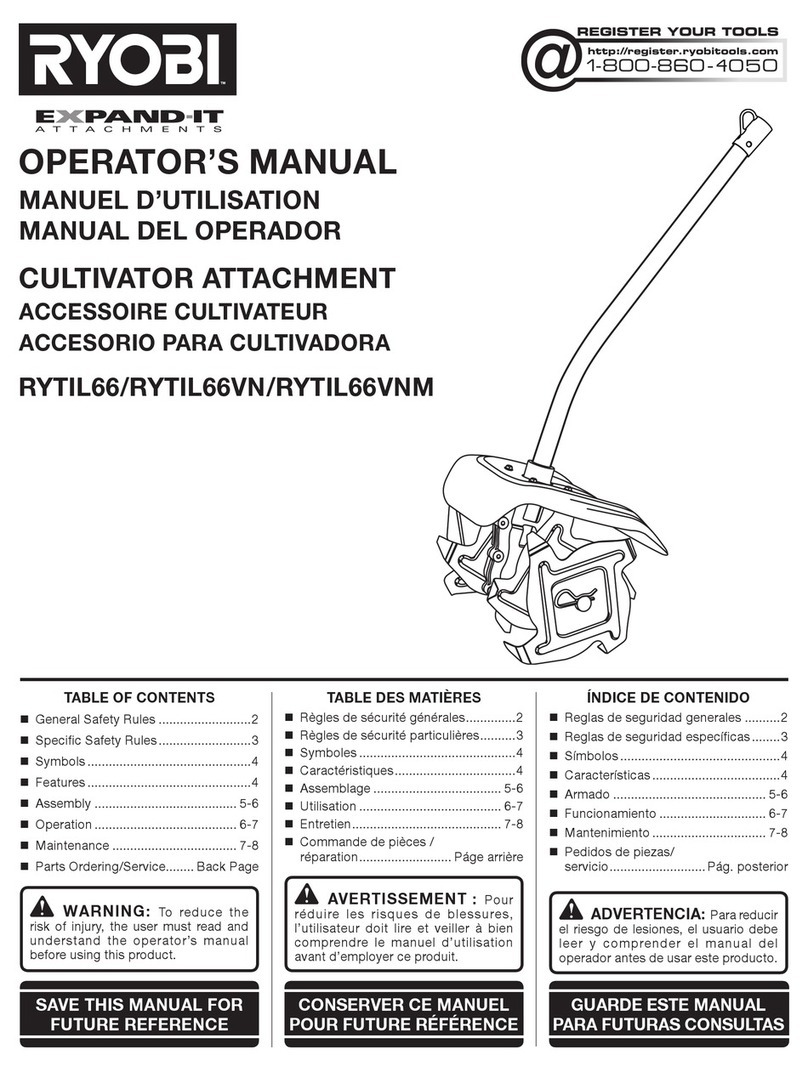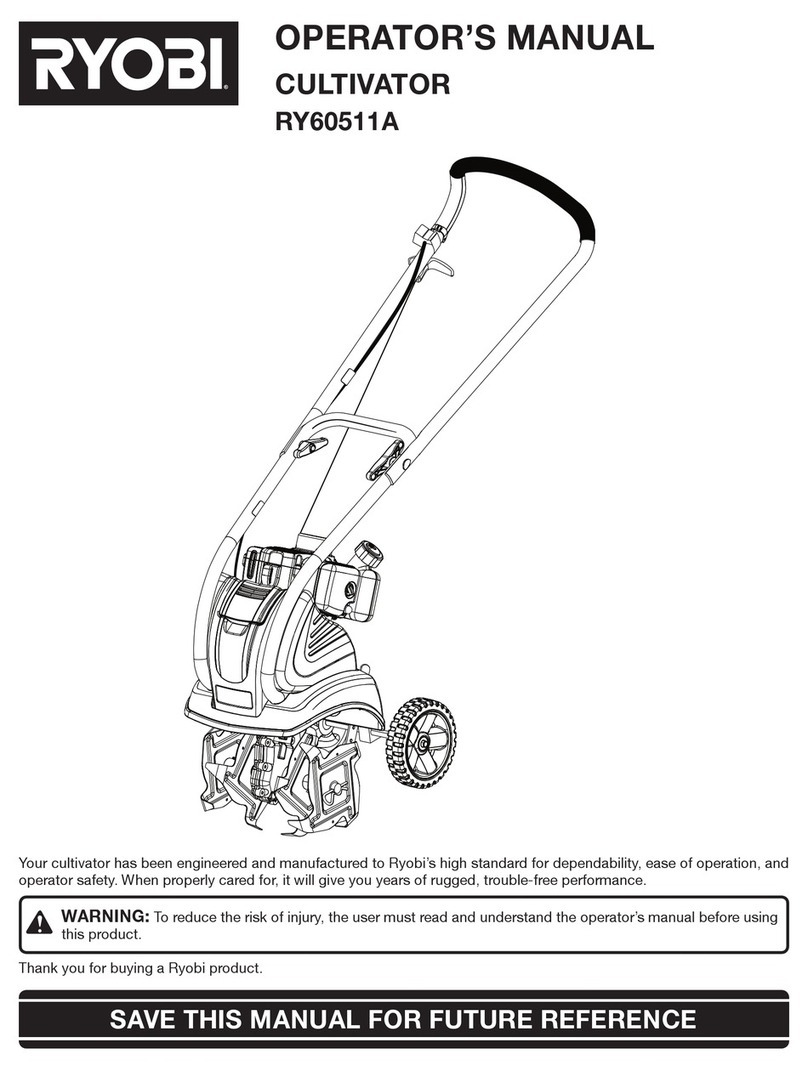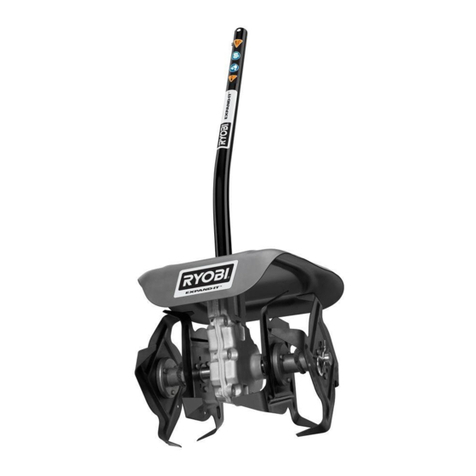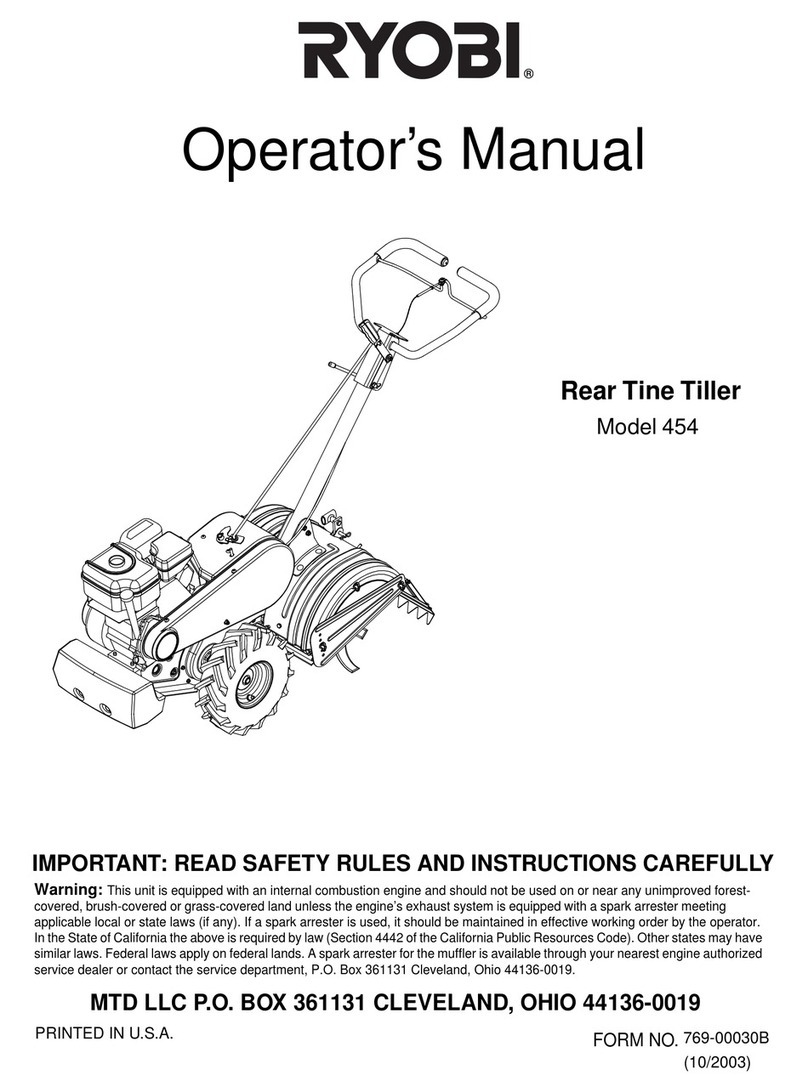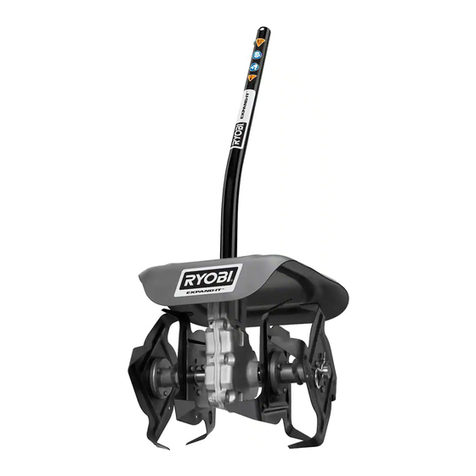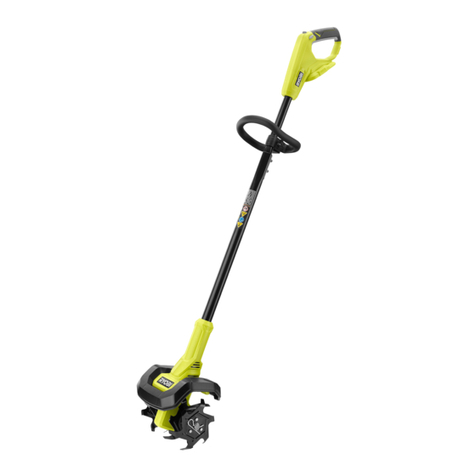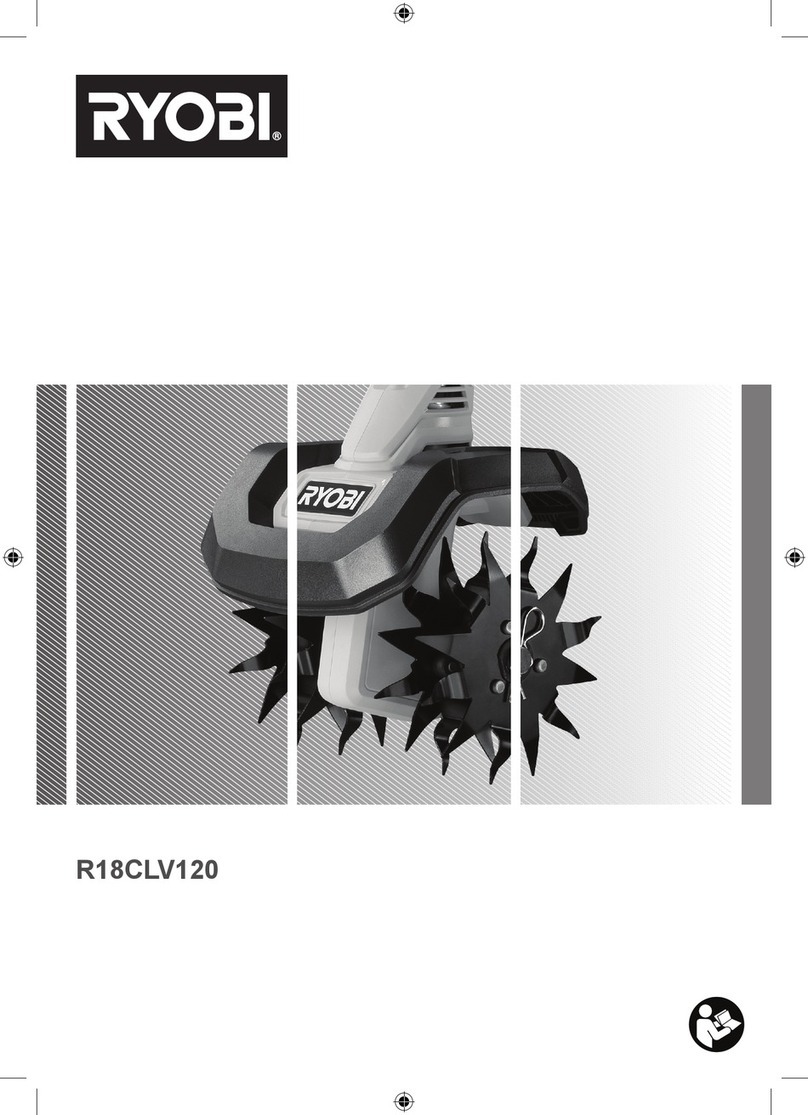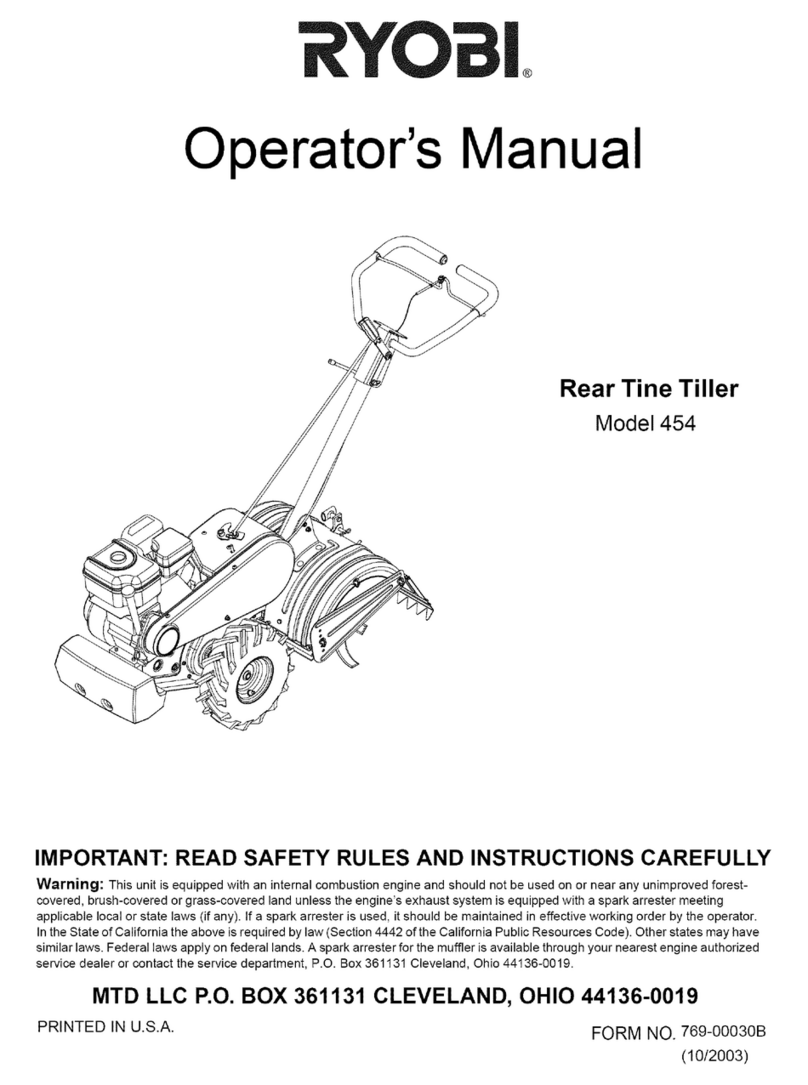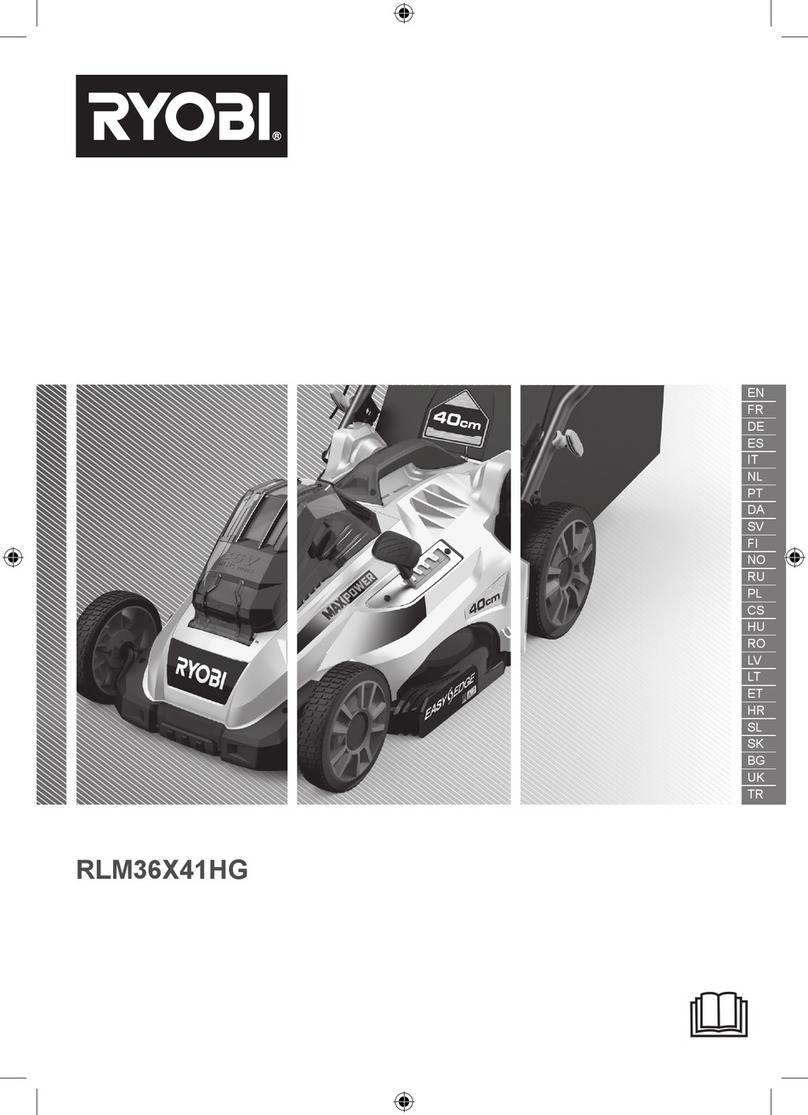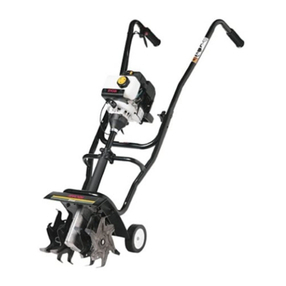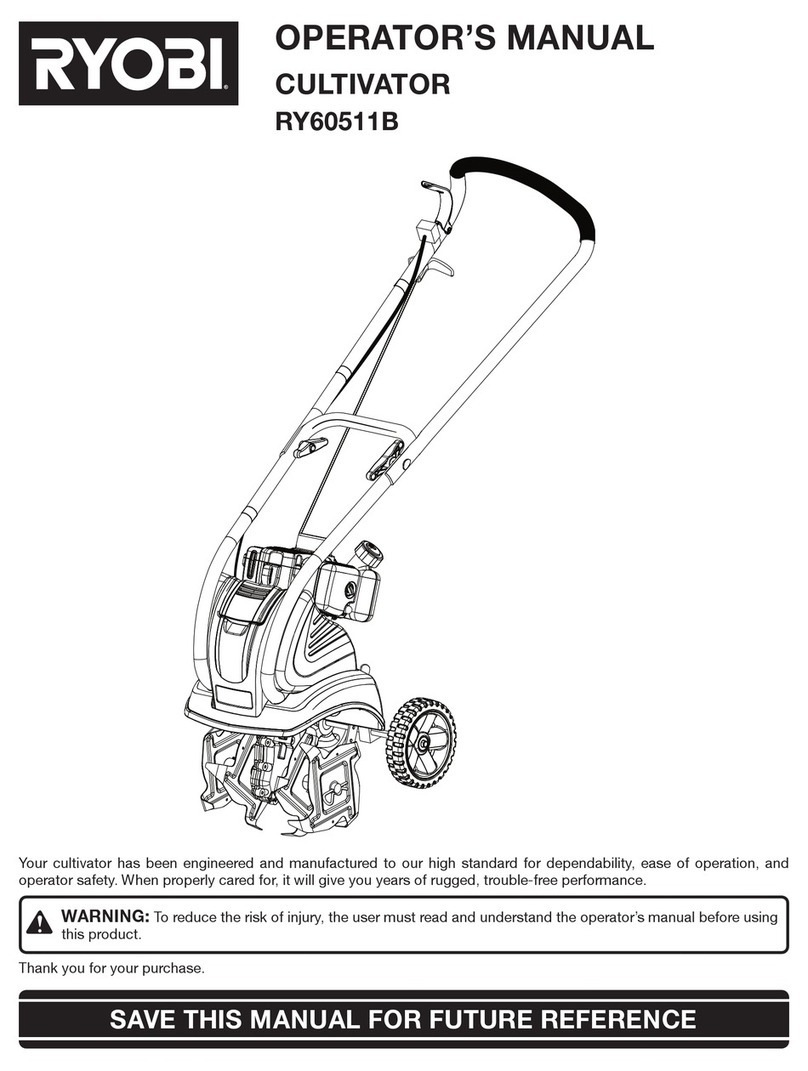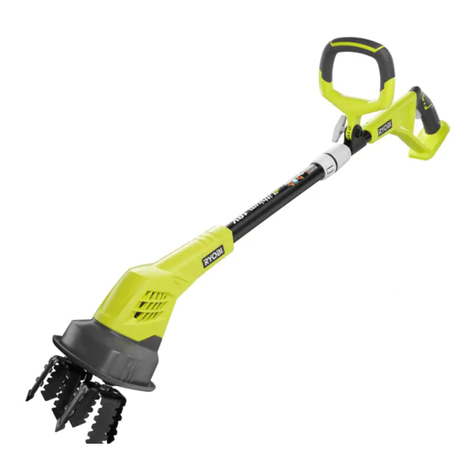2
■Use only attachments and accessories approved by the
manufacturer of the machine (such as wheel weights,
counterweights, and the like).
■Never operate the tiller without good visibility or light.
■Be careful when tilling in hard ground. The tines may
catch in the ground and propel the tiller forward. If this
occurs, let go of the handlebars and do not restrain the
machine.
■Use extreme caution when reversing or pulling the
machine towards you. To avoid getting pinned against
a structure, ensure adequate distance before reversing
near a wall or fence. For machines with powered
reverse drive capability, familiarize yourself with the
operation of the Emergency Stop Control. It provides
a secondary means of stopping power to the tines and
wheel drive in an emergency.
■Do not change the engine governor settings or over
speed the engine.
■Start the engine or switch on the motor carefully
according to instructions and with feet away from the
tines.
■Never pick up or carry a machine while the engine
(motor) is running.
■Do not operate the tiller while under the influence of
alcohol or drugs.
■Powered walk-behind tiller work is strenuous. You
must be in good physical condition and mentally alert.
If you have any condition that might be aggravated
by strenuous work, check with your doctor before
operating a powered walk-behind tiller.
MAINTENANCE AND STORAGE
■Keep machine, attachments, and accessories in safe
working condition.
■Check shear bolts, engine mounting bolts, and other
bolts at frequent intervals for proper tightness to be sure
the equipment is in safe working condition.
■Never store the machine with fuel in the fuel tank inside
a building where ignition sources are present, such
as hot water and space heaters, clothes dryers, and
the like. Allow the engine to cool before storing in any
enclosure.
■Always refer to the operator’s manual for important
details if the tiller is to be stored for an extended period.
■If the fuel tank has to be drained, do this outdoors.
■Follow manufacturer’s recommendations for safe
loading, unloading, transport, and storage of machine.
CULTIVATOR SAFETY WARNINGS
■Wear a face filter in dusty conditions to reduce the risk
of injury associated with the inhalation of dust.
■Never pick up or carry the product while the motor is
running.
■Do not operate the product near underground electric
cables, telephone lines, pipes, or hoses.
■Use the product only in daylight or good artificial light.
■Do not walk backwards when using the product.
■Do not use the product near drop-offs, ditches,
excessively steep slopes, or embankments. Poor
footing could cause a slip-and-fall accident.
■Exercise extreme caution when working on difficult
soil. If the soil is very hard, water a few days before
cultivation.
■Avoid working the soil when soggy or wet. Wait a day or
two after heavy rain for the ground to dry.
■Keep hands and feet away from the rotating tines at
all times and especially when switching on the motor.
■Beware of objects thrown by the rotating tines. Clear
debris like small stones, gravel, and other foreign
objects from the work area before starting operation.
Wires or string may become entangled with the rotating
tines.
■Beware, the tines continue to rotate after the motor is
switched off.
■Always ensure that ventilation openings are kept clear
of debris.
■Make sure that all the protective devices are fitted and
in good condition.
■Do not modify the product in any way as this may
increase the risk of injury to yourself or others.
CAUTION
The product may bounce upward and/or jump forward
if the tines strike extremely hard packed soil, frozen
ground, or buried obstacles such as large stones, roots,
and stumps.
CAUTION
Before moving the product from one area to another,
switch off the motor, and wait for the tines to come to a
complete stop. Be careful not to let the tines touch the
ground while moving the product. The tines, as well as
the product itself, may be damaged even if the motor is
switched off.
OPERATING TIPS
■To reduce the risk of injury from contact with the moving
parts or from thrown objects, the operator must stand
behind the handlebar. Never stand to the side or forward
of the handlebars while the product is in operation.
■Always wear eye protection. Always wear non-slip
safety footwear when operating the product.
■While the product will cut and help clear underground
vegetation and roots, the tines could become tangled
in heavy vegetation or stubble above ground. Clear the
area to be cultivated with a brushcutter or other similar
means and prepare the ground by removing any large
debris, such as stones, bricks, and metal poles from
the surface.
■Keeping hands and feet away from the tines, start the
motor with the tines slightly above the ground surface
by pressing the switch lock followed by the on/off
switch. While securely holding the handlebars, lower
the tines onto the ground. The product may try to pull
itself forward at this point depending upon the hardness
of the ground. Resist the pull of the product to go
forward, and the tines should start to bury themselves
into the ground. If they do not, use a reverse-and-
forward (about 20 cm is sufficient) or a slight rocking-
up-and-down motion of the handlebar to assist the tines
to get to their working depth.
■You may alter the depth in the ground of the tines by
moving the wheels closer to or further from the tines.
Once the tines are in the ground to the depth required,
slowly move the product forward, letting the motor do
the work. If the tines strike some object too hard to move
or cut, the product may raise its height as the tines try to
pass over the obstruction. Stop the product and allow

